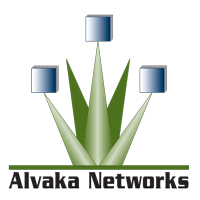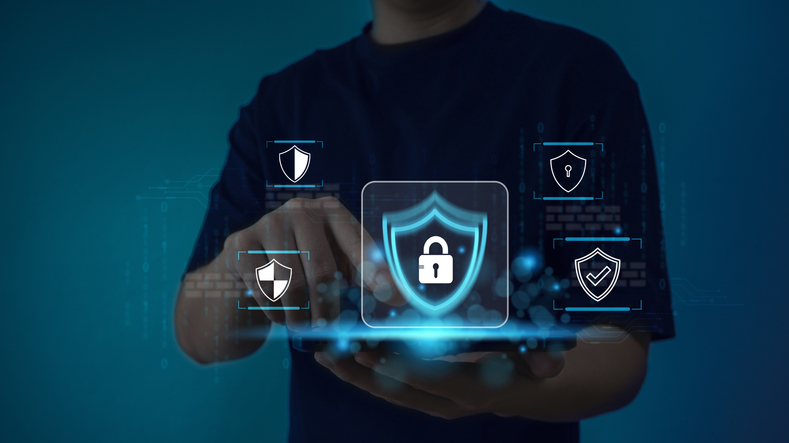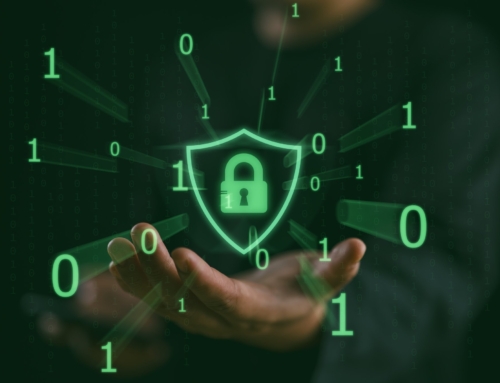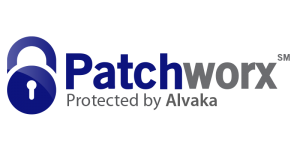Managing Third-Party Risk to Prevent Ransomware Infections
Understanding the Threat Landscape
Third-party risk management for ransomware has become a crucial component in the realm of cybersecurity for organizations. We at Alvaka are acutely aware of the prevalence of ransomware attacks and the vulnerabilities these can introduce through third-party vendors. In an era where interconnectivity is not just commonplace but required for business operations, the significance of robust third-party risk management cannot be overstated. Our approach is designed to effectively manage and mitigate the risks associated with the outsourcing of services and technologies, ensuring that our clients are protected against the evolving threats posed by cyber adversaries.
The Rise of Ransomware via Third-Party Networks
The intricate relationships that enterprises have with their third-party networks can often serve as conduits for ransomware. The pathways ransomware can take through these partnerships may be indirect, but the impact can be devastating, with potential breaches affecting not just one vendor but all the businesses connected within that network. We recognize this systemic risk and help businesses understand the criticality of establishing a resilient barrier to shield against such indirect attacks. Our services are tailored to help our clients ensure that their third-party vendors are not their weakest link but rather a fortified extension of their cybersecurity posture.
Essential Components of Third-Party Risk Management
Key elements constitute the core of a comprehensive third-party risk management program, especially in targeting ransomware threats. These include thorough due diligence processes, consistent policy and standards enforcement, and strategic incident response mechanisms. At Alvaka, we prioritize these pillars in our risk management services, understanding that a proactive and nuanced approach is necessary when it comes to defending against ransomware propagated through third-party networks. Our expertise allows us to assist businesses in navigating the complexity of third-party interactions while maintaining robust security measures tailored to their unique requirements.
Assessing and Auditing Third-Party Vendors
We understand that to safeguard your operations from ransomware, stringent assessment, and auditing of third-party vendors are non-negotiable processes. It’s imperative to rigorously evaluate the security postures of our partners, as these entities can inadvertently become conduits for ransomware infiltration. At Alvaka, our teams don’t just settle for onboarding assessments; we advocate for continuous auditing and risk assessment throughout the lifecycle of our third-party relationships.
We equally recognize that compliance isn’t a one-time event but an ongoing commitment. Thus, we ensure that our vendors adhere strictly to industry standards and best practices, aligning their protocols with our unwavering dedication to security. By conducting regular assessments and audits, we can effectively identify potential vulnerabilities and enforce corrective measures swiftly, diminishing the risk of ransomware threats to an absolute minimum.
Implementing Strong Access Controls and Monitoring
To fortify defenses against ransomware, we prioritize the implementation of robust access controls. We believe in the principle of least privilege, where third-party vendors are granted access strictly to what is essential for their role. This minimizes potential attack surfaces and limits the damage that could be inflicted by ransomware that might breach third-party systems.
Furthermore, our vigilant monitoring regime extends beyond mere access. We consistently oversee activities within our network, poised to detect any anomalous behavior that may signal a ransomware attempt. By leveraging the latest in security information and event management (SIEM) tools, we offer real-time insights and rapid response capabilities. It’s this proactive stance that can be the difference between an attempted breach and a disastrous compromise.
Third-Party Risk Management for Ransomware: Incident Response Planning and Regular Testing
In the event that ransomware evades our first lines of defense, a well-crafted incident response plan becomes our most powerful tool. At Alvaka, we cultivate a culture of preparedness, ensuring that our team knows exactly what steps to take in the wake of a ransomware attack. This preparation is not static; we’re constantly revising our response strategies to align with evolving threat landscapes.
Equally crucial to our third-party risk management for ransomware is the rigor of our testing protocols. We don’t simply draft plans and shelve them; we carry out regular testing drills, simulating ransomware scenarios to evaluate our responsiveness and tweak our strategies for maximum effectiveness. The following list illustrates key facets of our drills:
- Simulation of ransomware incursion scenarios
- Mock activation of our incident response team
- Real-time problem-solving exercises
- Comprehensive post-drill analyses and feedback sessions
Such thorough testing ensures that when faced with the real threats, our response is swift, decisive, and minimally disruptive. Our resilience to ransomware attacks is not by chance; it’s the result of meticulous planning, robust systems, and a relentless commitment to security that defines the essence of Alvaka.
Did you know? Implementing strong access controls can reduce the risk of ransomware attacks by preventing unauthorized access from third-party vendors to critical systems.
Third-party Risk Management for Ransomware: Cementing Your Defense
In the evolving tapestry of cyber threats, it has become clear that building resilience against ransomware is not a solo endeavor. Establishing strong third-party risk management for ransomware is essential in sealing the cracks within our network’s defenses. The partnership journey should be one of mutual security progression, where vigilance is as collective as it is individual. By integrating the foundations of thorough assessments, stringent access controls, and proactive incident response, we pave the way for a fortified stance against these insidious threats.
Reinforcing Trust with Action: The Alvaka Approach
At Alvaka, we recognize that the last line of defense is often our preemptive strike. Our commitment to safeguarding your business extends through every layer of interaction, especially with third parties. As a cohesive unit, we advocate for continuous improvement, understanding that the landscape is never static—the threats evolve, and so do we. Our third-party risk management for ransomware strategies are designed not only to protect your business but to empower it, ensuring that the trust placed in our partnerships is both deserved and protected.
Commitment to Continuous Improvement and Education
Our ethos is grounded in the belief that education and adaptability are at the heart of cybersecurity. We continually invest in our team’s education to stay ahead of the latest threats, ensuring that the wisdom we impart to you—our client—is both current and actionable. This commitment translates into third-party risk management for ransomware strategies that are sharp, informed, and tailored to meet the ever-changing demands of the digital world.
Fostering the Growth of Secure Business Ecosystems
We see the protection of your data and infrastructure not merely as a goal but as a journey that we embark on together. By nurturing secure ecosystems where third parties are held to the highest standards of cybersecurity hygiene, we foster an environment where ransomware threats are significantly diminished. It is in this collaborative effort that we find our strength, turning potential vulnerabilities into bastions of defense.
Chart Your Course with Confidence
The consideration and implementation of comprehensive third-party risk management is not an endeavor you will face alone. As part of our shared mission, Alvaka is dedicated to guiding you, step by step, through the intricacies of ransomware defense. Trust in our hands-on approach to secure your networks and in our expertise as we navigate these challenges together. Chart your course with confidence, knowing that your ransomware defense is fortified with the unwavering support of a team that stands ready to protect, detect, and respond.
Ransomware Recovery: Preparing for the Unexpected
Even with robust third-party risk management, unexpected breaches can occur. That’s why having a potent ransomware recovery plan is indispensable. We stand by your side, not only to help mitigate risks but to ensure that, in the event of an incident, recovery is swift and complete. Your resilience is our priority, and our ransomware recovery solutions are designed to restore operations with minimal downtime and disruption. Prepare for the unexpected, and trust in our comprehensive recovery strategies to bring your business back from the brink.
The Final Word: Your Safeguard Is Our Imperative
Our third-party risk management for ransomware solutions is an integral component of a proactive cybersecurity defense strategy. We prioritize the security of your operations, treating every interconnected party as an extension of our safeguarding umbrella. Whether it’s through meticulous vetting, continuous monitoring, or implementing cutting-edge defense measures, we gear every action towards fortifying your network against ransomware threats. Together, we will cultivate an environment of resilience, readiness, and collective cybersecurity awareness—because your safeguard is our imperative.
FAQ
What is the significance of third-party risk management in preventing ransomware attacks? ▼
Third-party risk management is crucial in preventing ransomware attacks because it helps in identifying and mitigating vulnerabilities that can be exploited through third-party networks. By thoroughly assessing and monitoring third-party vendors, we can ensure that they have strong cybersecurity practices in place. Consequently, this reduces the risk of ransomware infiltrating our systems via these external partnerships.
How often should we assess and audit our third-party vendors? ▼
Regular assessments and audits should be conducted at least annually or whenever there are significant changes in the vendor’s services or in the threat landscape. Additionally, we should perform continuous monitoring to ensure ongoing compliance and identify potential security incidents as early as possible.
Why are access controls important in third-party risk management? ▼
Implementing strong access controls is essential to limit third-party access to only what is necessary for them to perform their services. This minimizes the potential entry points for ransomware and other threats, thereby enhancing the overall security of our systems. Moreover, monitoring these access points continuously allows us to detect unusual activities that may indicate a ransomware attack.
What strategies can we employ to ensure effective incident response planning? ▼
In order to ensure an effective incident response plan, we need to establish clear procedures for responding to ransomware attacks, including roles and responsibilities. Furthermore, regular testing and drills are imperative for ensuring the plan is practical and that all stakeholders are prepared to act swiftly and effectively in the event of an actual incident.
How can ransomware enter our network through third-party vendors? ▼
Ransomware can enter our network through third-party vendors if they have inadequate cybersecurity practices or if their systems become compromised. Attackers can exploit weak points in a vendor’s network to gain access to our systems, especially if we have not properly isolated our network and closely monitored vendor access.
Can you provide an example of a strong access control measure? ▼
A strong access control measure that we implement is the principle of “least privilege,” which ensures that third-party vendors have access only to the resources necessary for the tasks they are performing. Moreover, we use multi-factor authentication (MFA) for an added layer of security, further ensuring that access is granted only to authorized users.
How does continuous monitoring contribute to ransomware defense? ▼
Continuous monitoring plays a pivotal role in ransomware defense as it provides real-time visibility into our network and vendor activities. It helps us detect unusual patterns or irregularities that could signify a breach or an ongoing ransomware attack, allowing us to respond promptly to mitigate potential damage.
Should our incident response plan include communication strategies? ▼
Yes, our incident response plan should include comprehensive communication strategies that outline how to notify internal teams, external stakeholders, and regulatory bodies, if necessary. Clear and prompt communication is vital to managing the incident effectively and maintaining trust with our clients and partners.
What role does employee training play in third-party risk management? ▼
Employee training is a critical component of third-party risk management. By educating our employees about the risks associated with third-party interactions and teaching them to follow best practices, we enhance our overall security posture and reduce the likelihood of unintentional breaches that could lead to ransomware infections.
What are the benefits of regularly testing our incident response plan? ▼
Regularly testing our incident response plan ensures that the plan is effective and up-to-date with the latest threats. It also helps us identify any gaps or weaknesses in our preparedness that need to be addressed. As a result, we can be confident in our ability to quickly and efficiently mitigate the impact of a ransomware attack.








 Smoke testing is a term used to describe the testing process for servers after patches are applied.
Smoke testing is a term used to describe the testing process for servers after patches are applied.  This is a basic cost calculator for you to compute your typical monthly cost for patching your servers, PCs, laptops, tablets and associated application software. It also forms the basis for you to begin calculating your Return on Investment for software patching, or for comparison with alternatives to the manual process of patching operating systems and application software—such as Patch Management as a Service, also known as Vulnerability Management as a Service.
This is a basic cost calculator for you to compute your typical monthly cost for patching your servers, PCs, laptops, tablets and associated application software. It also forms the basis for you to begin calculating your Return on Investment for software patching, or for comparison with alternatives to the manual process of patching operating systems and application software—such as Patch Management as a Service, also known as Vulnerability Management as a Service.